Approximately 170,000 Ukrainians from the Austro-Hungarian crownlands of Galicia and Bukovina (Bukovyna) arrived in Canada from September 1891 to August 1914. The vast majority settled in the prairie provinces of Manitoba, Saskatchewan, and Alberta, where they obtained land to farm.
Few of the early immigrants would have called themselves Ukrainian, but rather identified themselves as Galicians, Ruthenians, Hutsuls, Lemkos, or Bukovynians. Most Ukrainians from Galicia, including Ruthenians, Hutsuls, and Lemkos, were Greek Catholic, while those from Bukovyna were Greek Orthodox.
The first Ukrainian church built by these early settlers was St. Michael’s Orthodox church in Gardenton, Manitoba, in 1897. The following year in Star, Alberta, the first Ukrainian Greek Catholic church was built.
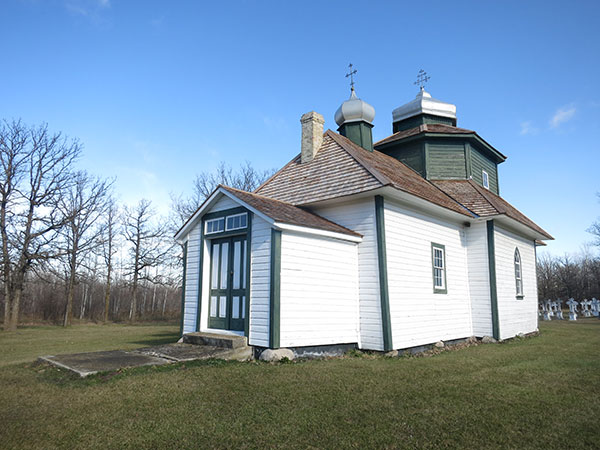
“While the first Ukrainian parishes built similar structures regardless of whether they were Catholic or Orthodox, the churches in Canada began to differ from those in the old country from the beginning. Building materials were not always the same. The styles of the local Roman Catholic and Protestant churches influenced Ukrainian church designs. The Canadian climate required some architectural adjustment. Few Ukrainian immigrants had significant experience in church building and few understood the theological significance of church architecture. But the immigrants were eager to have churches and many were built well before a priest was available.” (Ukrainian Churches of Canada)
As a result, many of the early churches, even though aspiring to the designs of Ukraine’s wooden churches, were basically log cabins with few decorations. Only later did churches become more decorative, especially those built in the “prairie cathedral” style of Father Philip Ruh, which combined Byzantine and Western influences.
On the whole, no one particular style of Ukrainian church architecture emerged in Canada; instead, there are many styles, which themselves tend to be hybrid varieties.
***
Today, hundreds of Ukrainian churches dot the Canadian prairies. Some are still functioning, but many are abandoned.
Fortunately, especially for those who don’t live in the region, there are Facebook groups devoted to documenting this vanishing architectural heritage, such as the group Ukrainian & Other Unique Prairie Churches. There is also a wonderful online resource about the history and architecture of Ukrainian Churches in Canada. Also worth mentioning is The Sanctuary Project, which aims to document Byzantine rite, primarily Ukrainian, sacral culture on the Canadian prairies.
Below is a small collection of these churches:
Churches in Alberta
Photographs by Glen Bowe
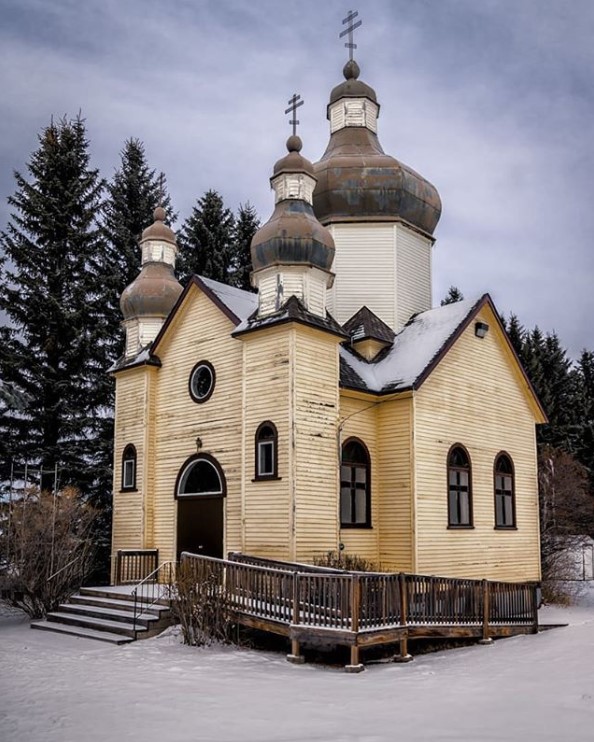
Rural Alberta 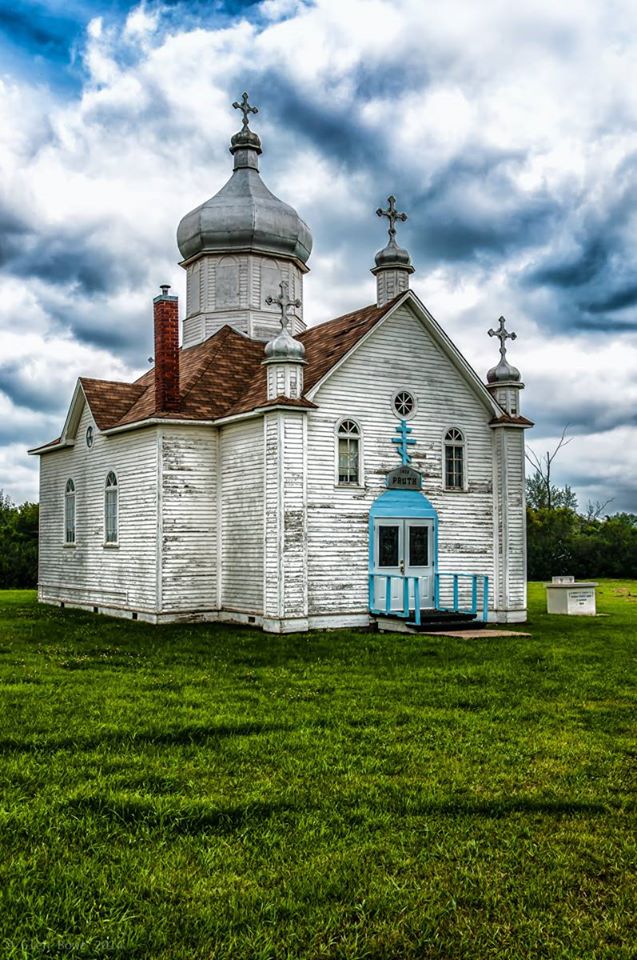
A Ukrainian Orthodox Church near Pruth, Alberta. The second built on this site by settlers from Bukovina 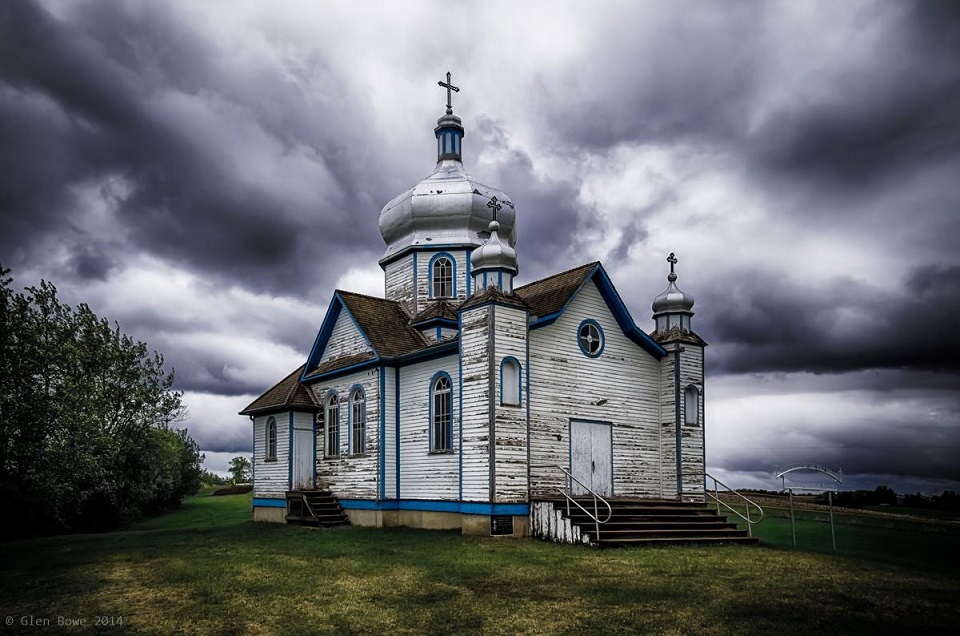
Exaltation of The Holy Cross, Ukrainian Catholic Parish
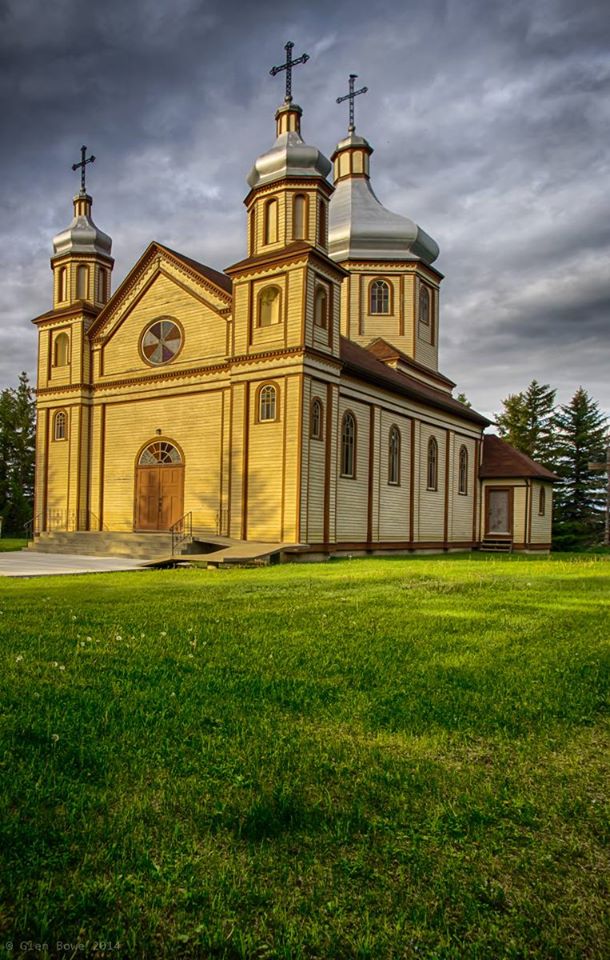
Holy Trinity Ukrainian Catholic Church 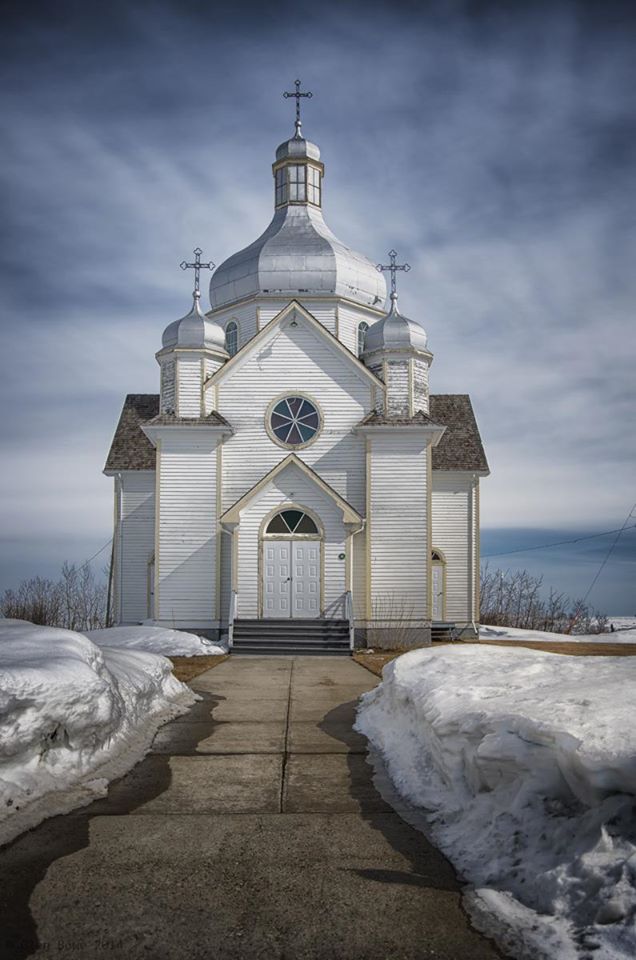
Transfiguration of Our Lord Ukrainian Catholic Parish 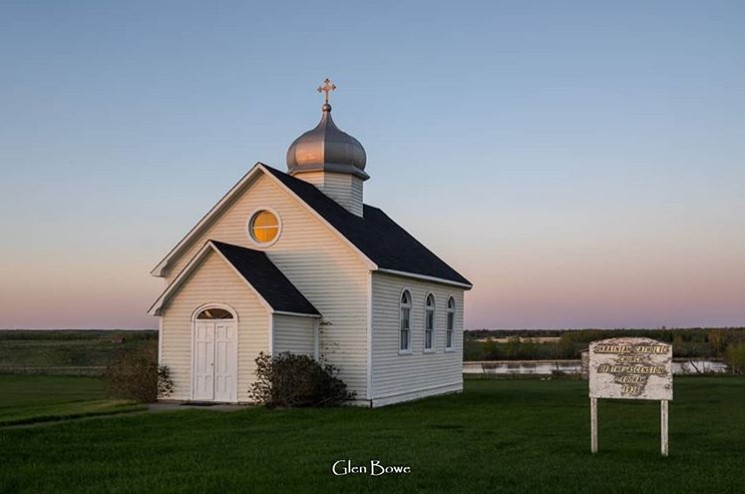
An old Ukrainian Catholic Church northeast of Edmonton
Ukrainian Catholic Church Assumption of Blessed Virgin Mary – Myrnam, AB
The church was built in 1919 and in 1947 it was moved a few kilometers from the cemetery to the present location. Sam Hryniw built the little model church in 1967.
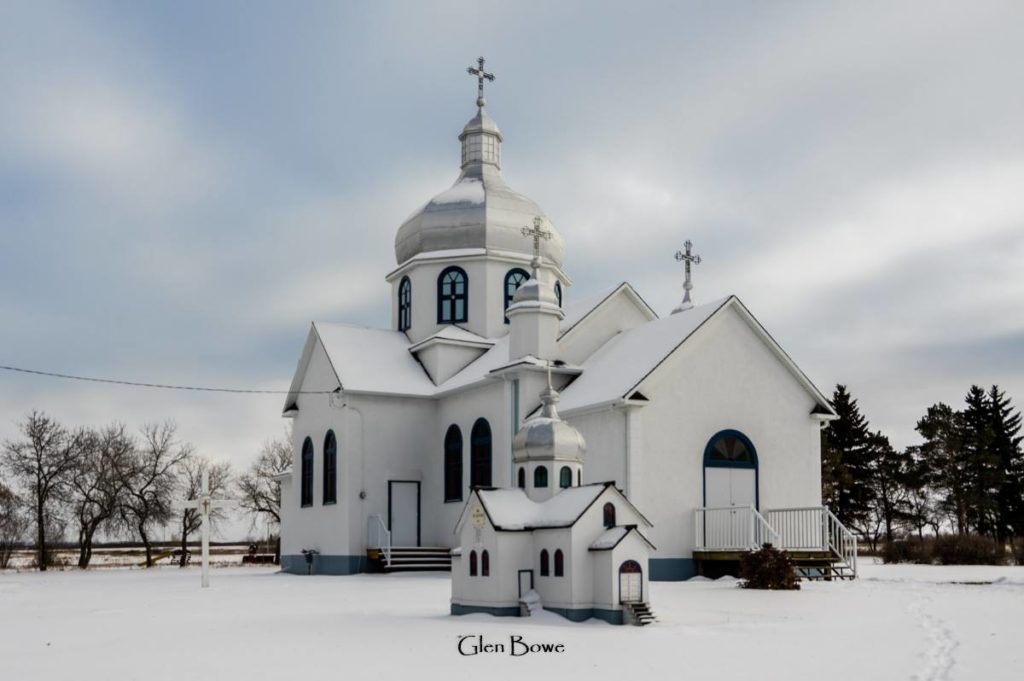
Presentation of the Blessed Virgin Mary Ukrainian Catholic Church – AB
This area south of Holden in Alberta was settled by immigrants from the Chortkiv region in the early 1900s. A plaque on the church says 1907, but construction of this church was started in 1917. The cemetery was established in 1907.
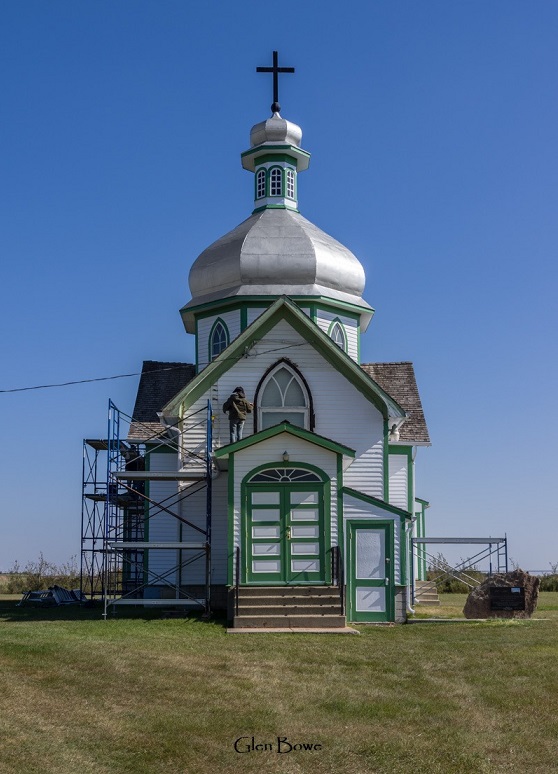
Churches in Saskatchewan
Photographs by Glen Bowe
Holy Ascension Ukrainian Orthodox Church – SK
Ukrainian Orthodox Church – SK
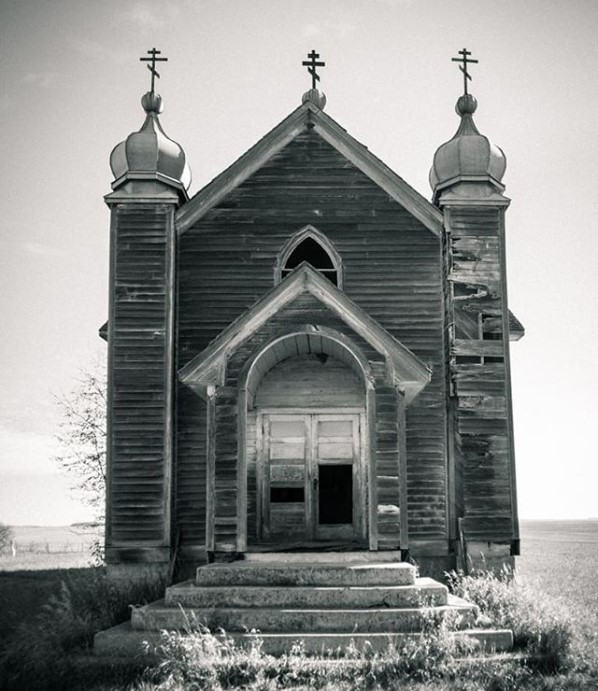
Ukrainian Greek Orthodox Church of St. Elia (1953) – Wroxton, SK
Ukrainian Catholic Church – Peterson, SK

Ukrainian Greek Catholic Church of the Dormition of the Blessed Virgin Mary – SK
Churches in Manitoba
Photographs by Ron Olynick from the Facebook group Ukrainian & Other Unique Prairie Churches
Patronage of the Blessed Virgin Mary Ukrainian Catholic Church – Rhodes, MB
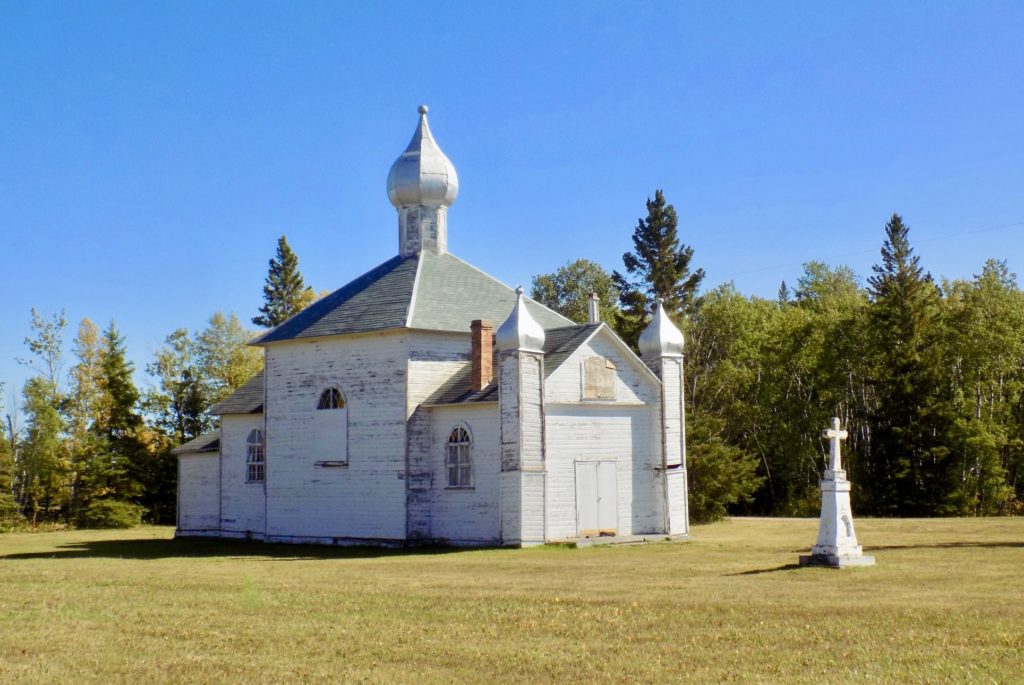
St. Nicholas Ukrainian Catholic Church – Ozerna, MB
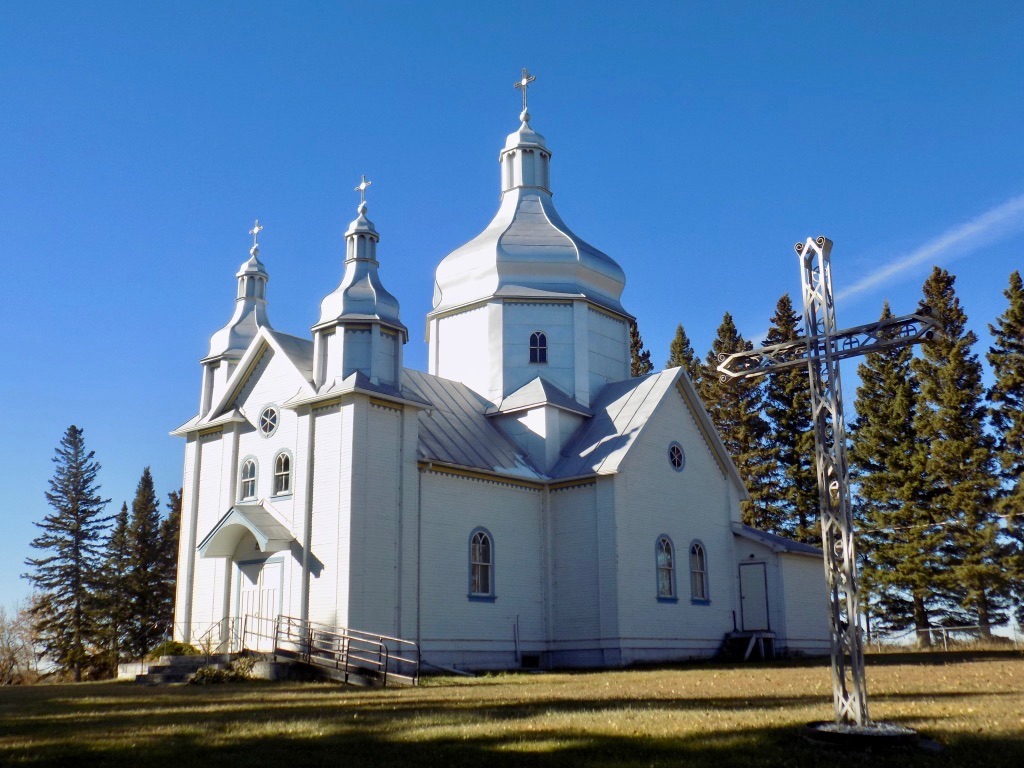
Holy Spirit Ukrainian Orthodox Church – Sifton, MB
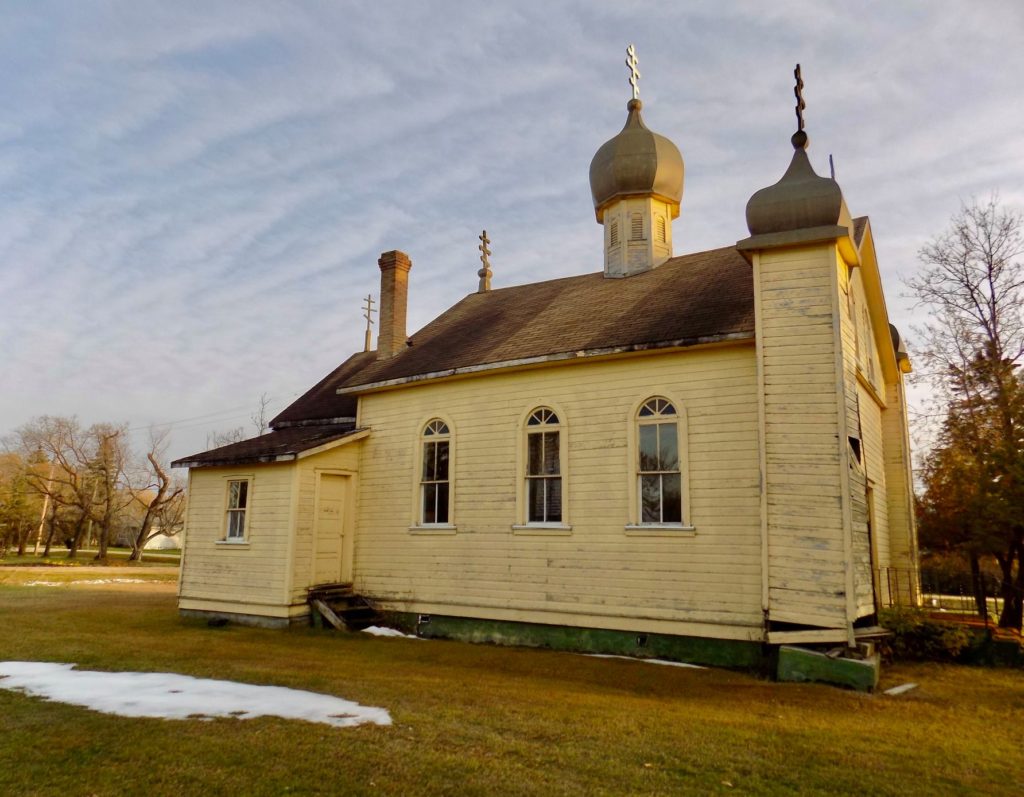
Assumption of the Virgin Mary Ukrainian Orthodox Church – Glen Elmo, MB
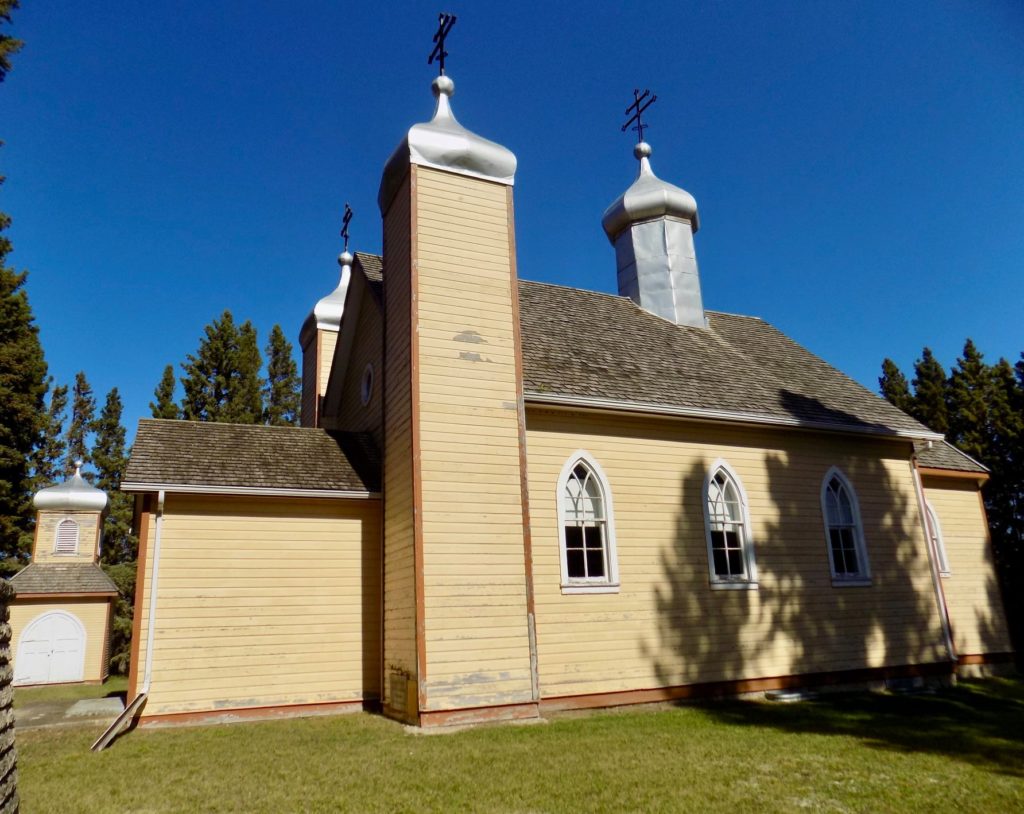
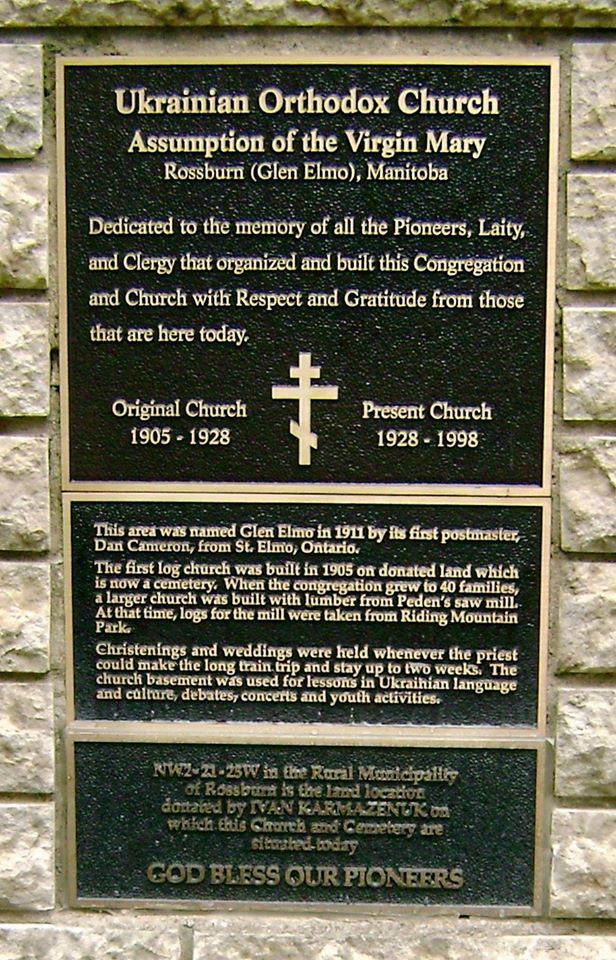
St. Demetrious Ukrainian Catholic Church – Drifting River, MB
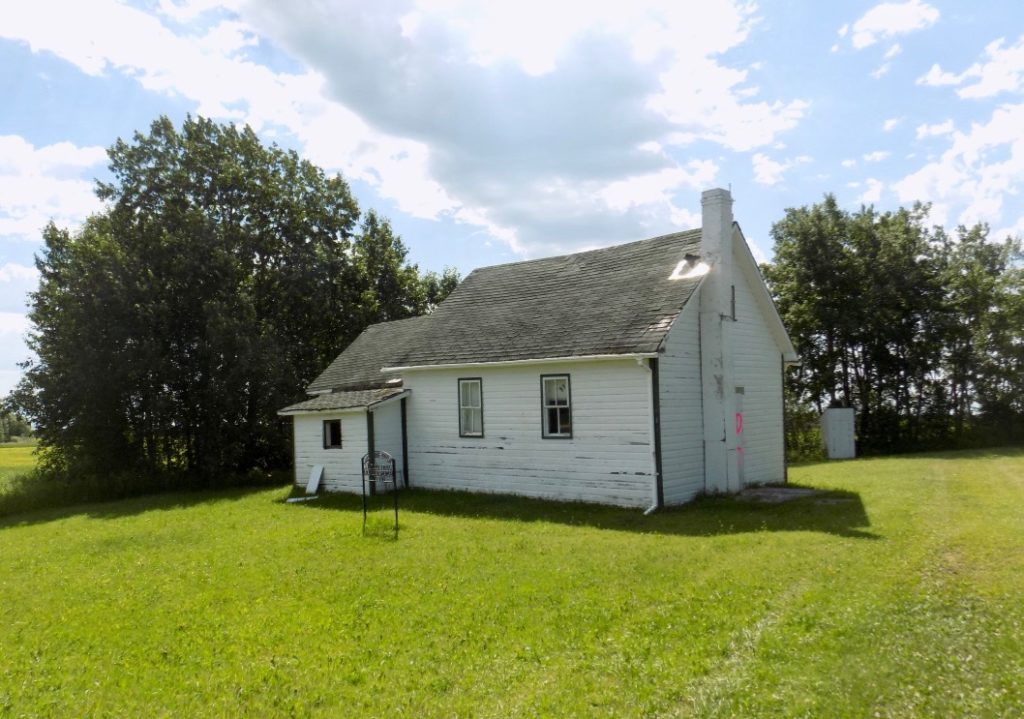
St. Michael’s Ukrainian Greek Catholic Church – Olha, MB
Built in 1904 by Peter Kawtucki, consecrated in 1907.
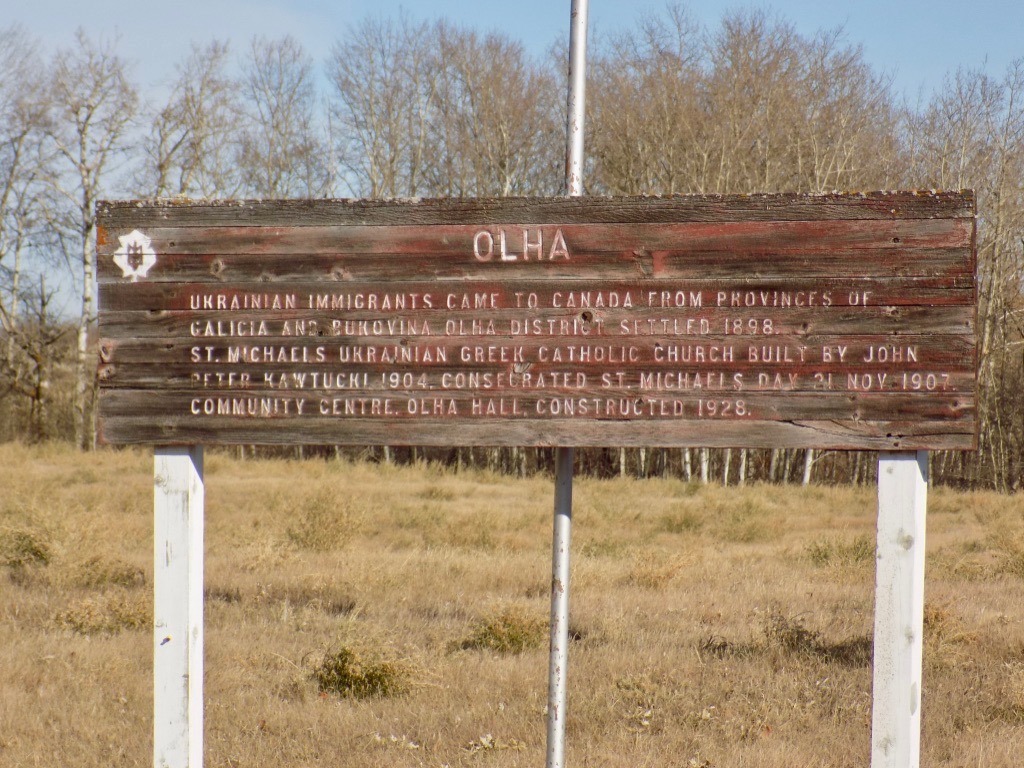
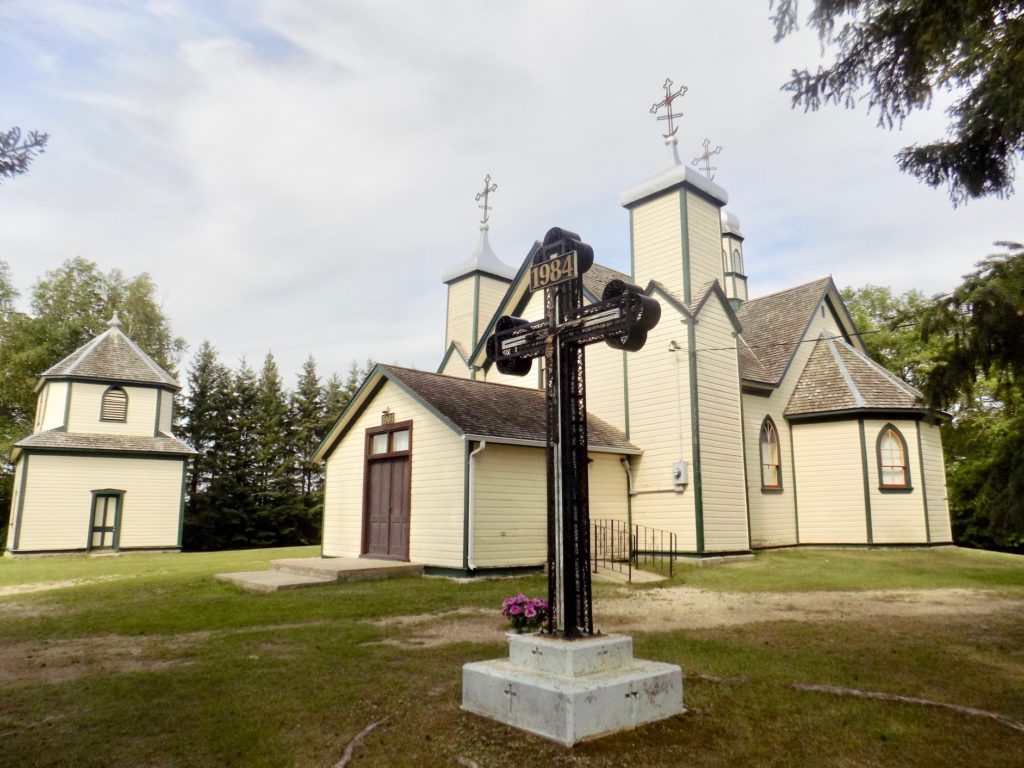
By Areta Kovalska
Photographs: Glen Bowe and Ron Olynick
Sources:
Ukrainian Churches of Canada
Basil Rotoff, Stella Hryniuk, Roman Yereniuk. Monuments to Faith: Ukrainian Churches in Manitoba. 1990.
Ukrainian Canadians, Wikipedia
The Virtual Museum of Canada
The Canadian Encyclopedia

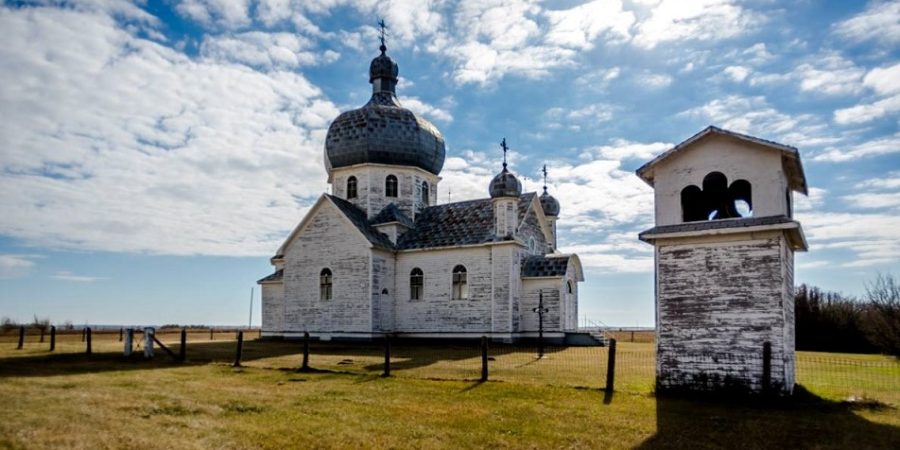
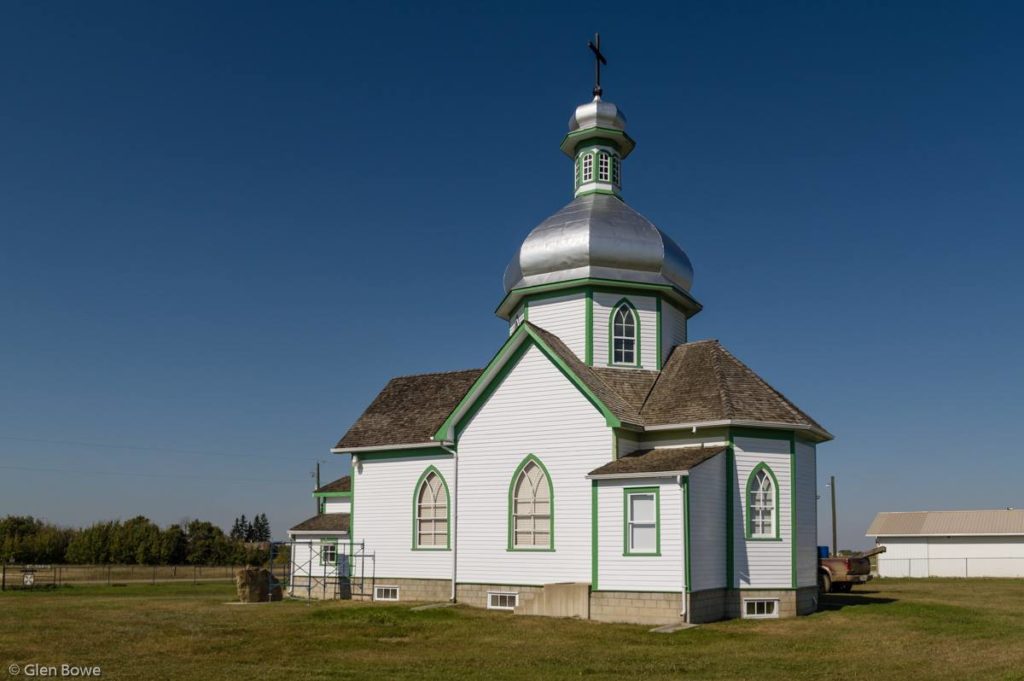
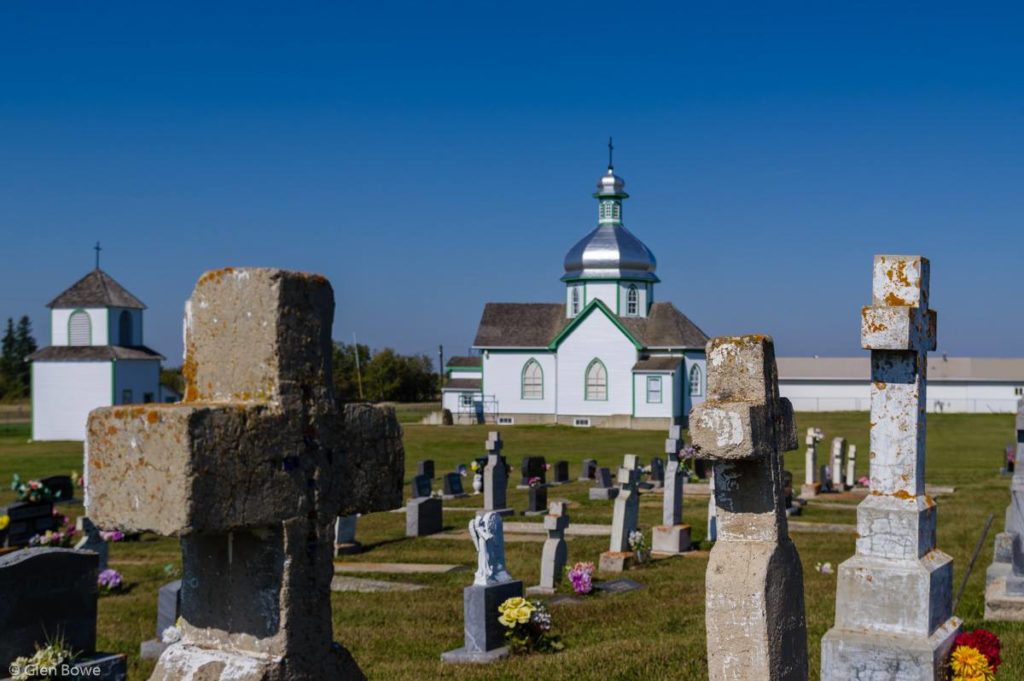
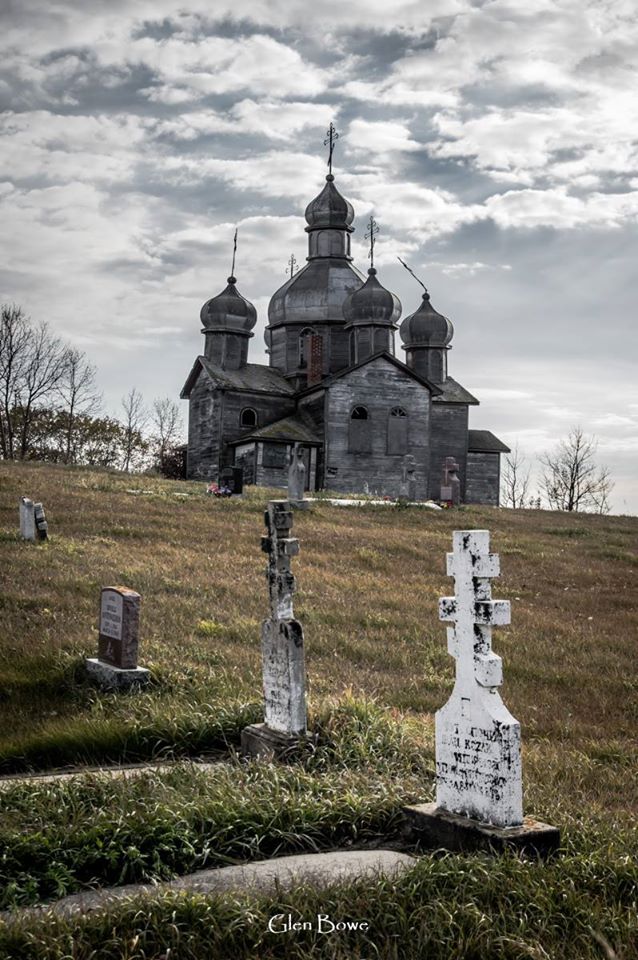
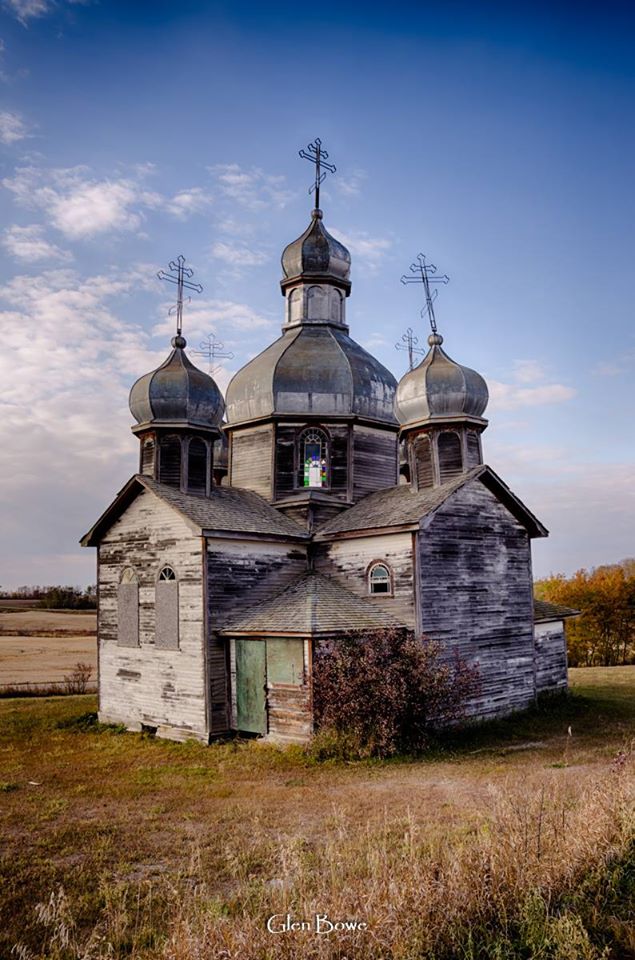



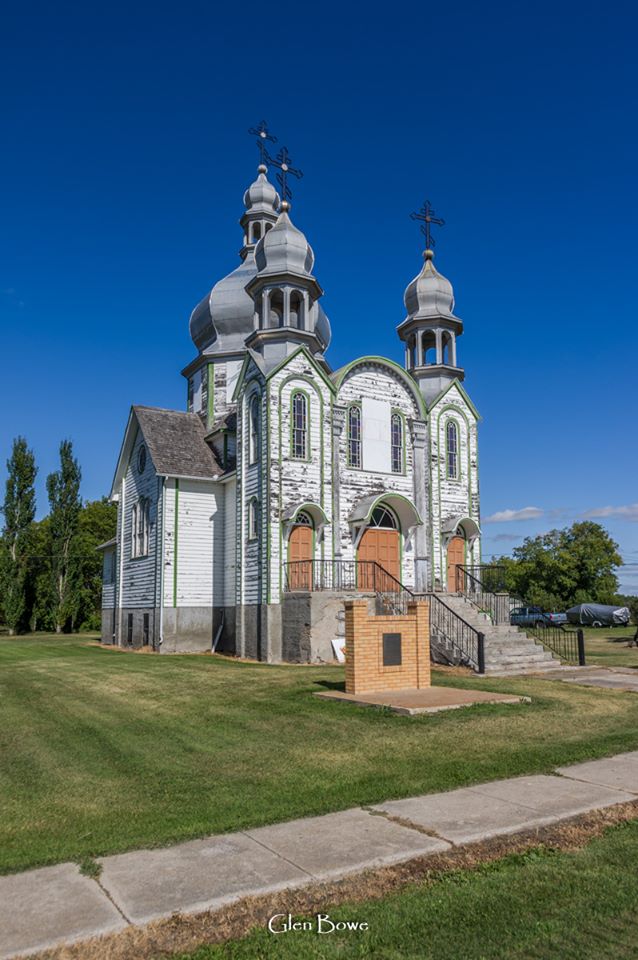

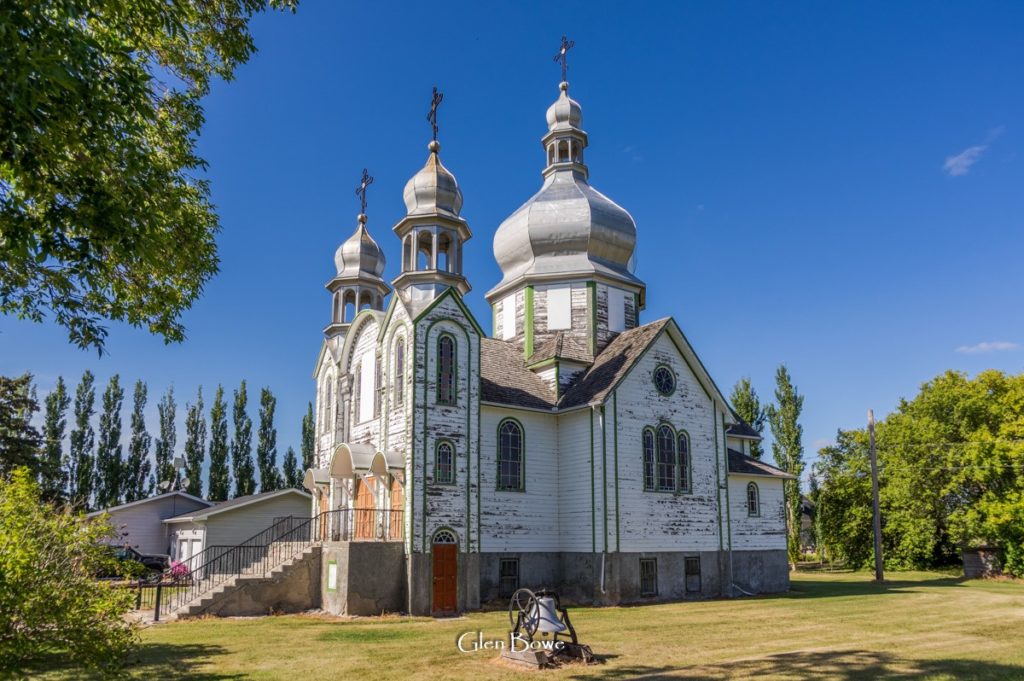
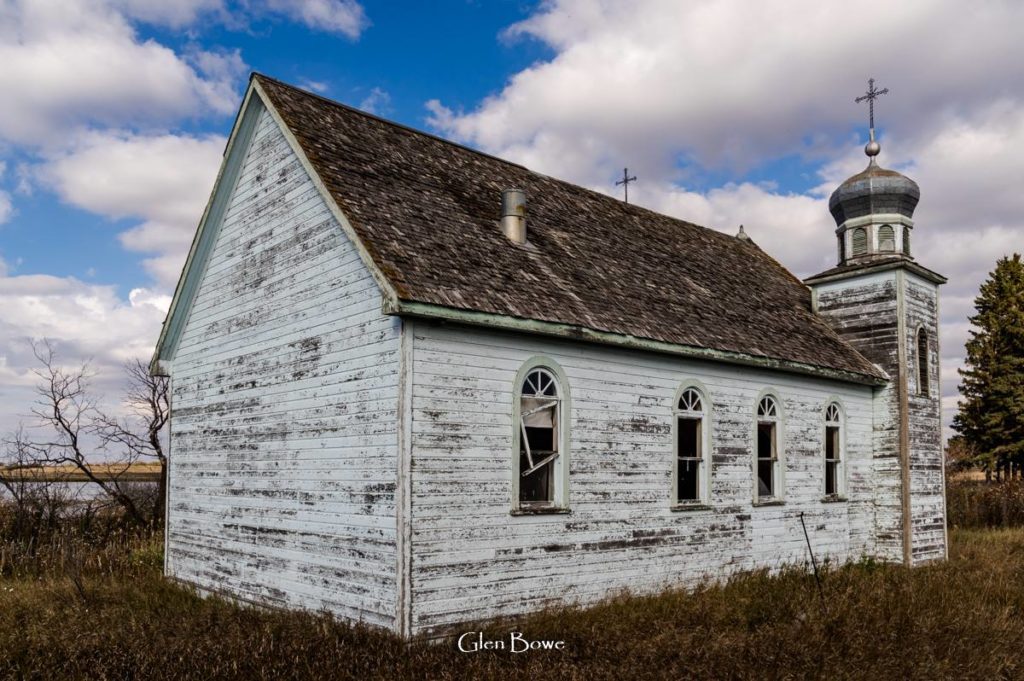
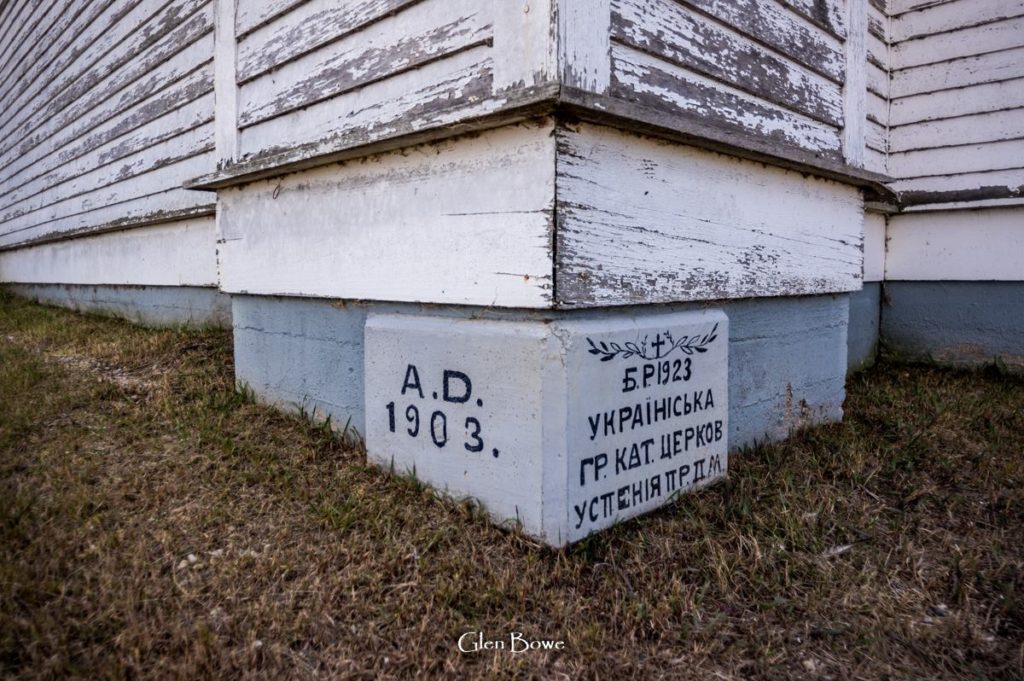
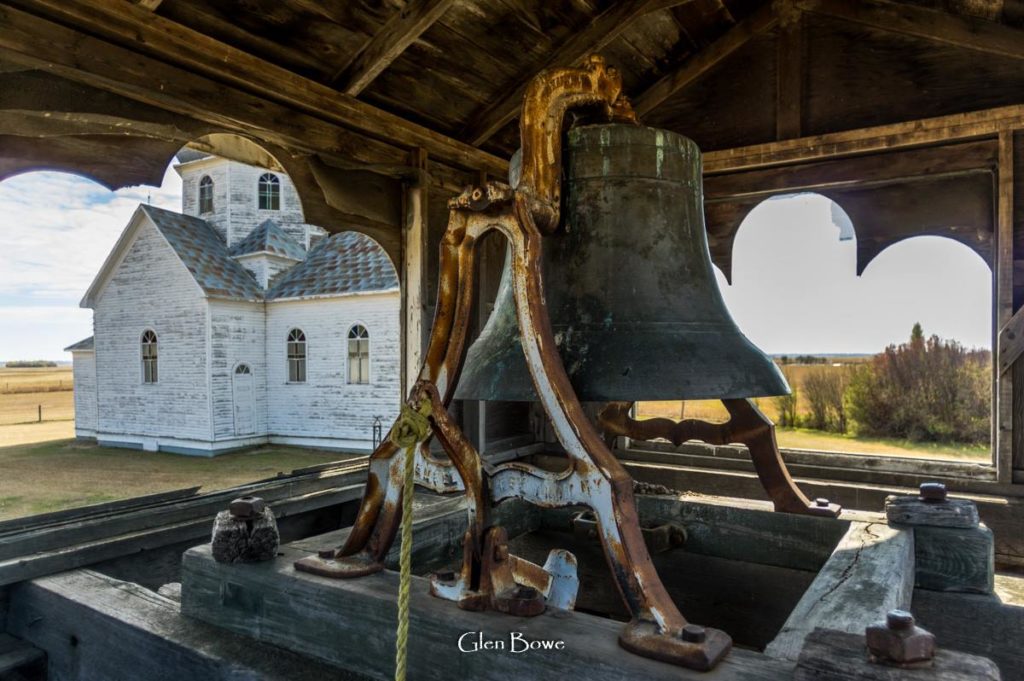
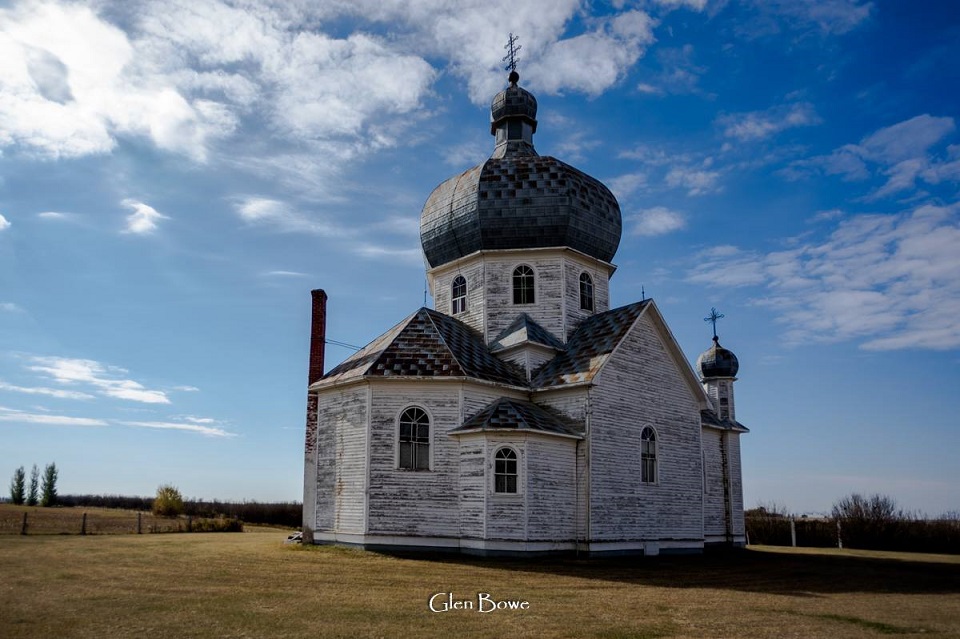
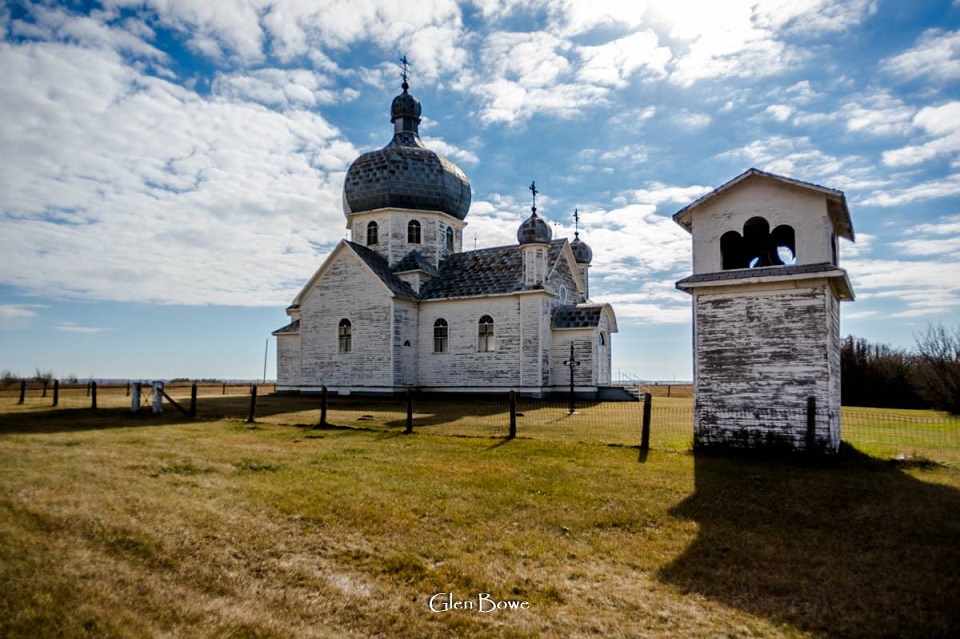
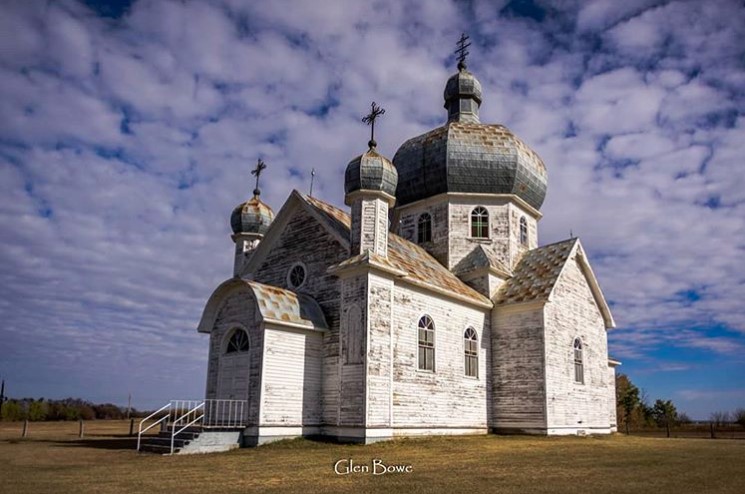




Just wondering why the Catholic Church in Chipman is not featured, as it was established by the first Ukrainian to arrive in Canada..he is buried in the cemetery which is right beside the church ,along with his siblings and children
Why don’t you take the pictures and submit to document and share with the world. That way we could all enjoy and see what you see.
What a treasure to see this beautiful historic record! Thank you very much!
Omg! Loved your post. So extremely informative. I couldn’t stop reading. Would live further information or a copy of this.
Beautiful Churches with thousands of stories past! I can only imagine the lives lived and lost over the years. I also wonder if there is a funding site , to help donate and restore these Churches that one could donate too?
Would love to see more, learn more and have then restored to their original build . History kept alive !
Thank you Areta for including 6 of my photos of Manitoba, Canada churches in “Forgotten Galicia”. And especially a big thank you for including my name and a link to my Facebook group site. I am very honoured indeed. Please feel free to use any of my other photographs that I have taken of Manitoba and Saskatchewan churches. Thus far, I have visited and photographed 149 Ukrainian Catholic (1 more to go) and 70 Ukrainian Orthodox churches in Manitoba alone. In closing, the last photograph you used was not the Olha, MB – St. Michael’s Ukrainian Catholic Church but of the Ozerna, MB – St. Nicholas Ukrainian Catholic Church (already posted). Дякую!
Hi Ron, Thank you for pointing out that I posted the incorrect photo for Olha. I have added the correct photo now.
Good evening Ron,
I’ve just come across your photos of rural churches in Canada, and greatly appreciate the time you’ve taken to travel to and document them. Have you also taken interior views of the same churches? I ask, because I’m about to begin a paper describing prairie church architecture in Canada, where churches often stand alone under the sky. I’d also welcome suggested references where the histories of the churches have been documented. Who built them? Were there itinerant carpenters? Did they work also as community social centers? How did the different denominations express their identities through architecture.
Kind Regards,
Glenn Sweitzer
Thank
I don’t recognise the photo of the Olha church. It is certainly not the one which is there now.
I accidentally posted the wrong photo for Olha. I updated the post, so the correct church is now posted.
Hei, Areta!
It was very interesting. Thank you. Only one thing: Galicia is the province in Spain. Galizia is the district in Ukraine.
Galicia is also the term in English used to refer to the former Habsburg crownland: https://en.wikipedia.org/wiki/Galicia_(Eastern_Europe)
It is interesting as My Grand Father and My Father and Brother came from Galicia.
Today I still have my Grand Fathers and Fathers pass ports and some information where they came from and where they settled in Manitoba.
Hola mí nombre es mirta , hay cementerios en Ucrania que esten todavía en algún lugar ? Ivano-frankvisk, por ejemplo?mis bisabuelos vinieron de allá y me gustaría saber si hay otros cementerios para poder averiguar datos..gracias
In case you are unaware, FamilySearch (https://www.familysearch.org) now has access to many of the available Greek Catholic (and Roman Catholic for Polish Galicians’) records. They are microfilmed, but not digitized, but you can use the town listing from https://www.geshergalicia.org/galician-town-locator/ to find which metrical books to search. (Polish are typically in Roman Catholic parishes, Ukrainian under Greek Catholic. BUT if they intermarried (as in my family) you may find some families split over both books (as apparently it was common for boys to get listed under the fathers church, girls under the mothers).
Eg, my ancestors were from near Zbarazh Raion (admin district). Specifically from Kretowce, and Penkivtsi. Looking them up on the https://www.geshergalicia.org/galician-town-locator/ you see that Kretowce was in the Zbaraz Miasto for Roman Catholic Records, and the Stryjówka records for Greek Catholic.
Similarly, Penkivtsi (then known as Pienkowce) falls under Toki for Roman Catholic records, and Medyn for Greek Catholic Records.
You can then go to “Catalog” in Family Search and search for ‘place’ using the adminstrative district. (Zbaraz Miasto, Stryjówka, Medyn, or Toki). The results will then be for a range of dates, and you can begin looking for your ancestors’ records. Good luck!
love seeing and reading stuff on my Ukrainian heritage, Ukrainians rule 🇺🇦☦
So proud of my husbands family . Hard working people that made their move to Canada an improvement to this country .
[…] Photo credit […]
I am thinking of those running for fear of losing their lives in the ongoing war of Russia and Ukraine. In the last 2 days the call up by Putin for more reservists to fight his war. How might these properties that are abandoned become home to those who need a new home and safe place from war and threat of war?